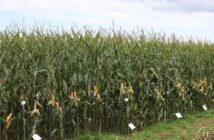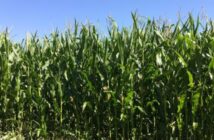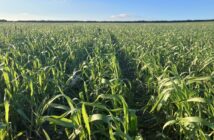With over 3400 first cuts and 1300 second cuts now analysed, Trouw Nutrition GB are predicting that well-balanced diets will allow similar production from forage this winter compared to last year.
“As ever, grass silages produced have reflected the growing season, yet some farmers will always make better quality feeds,” comments Trouw Nutrition GB Ruminant Specialist Tom Goatman. “On average, first cut quality is similar to last year at 30.8% dry matter, 10.7MJME, 14.1% crude protein and 97.6g/kgML intake potential. NDF is higher and lactic acid is markedly lower.
“But the average only tells part of the story. There is a considerable range in results and of concern is the fact that only 7.8% of samples received are more than 11.5ME compared to 13% last year, meaning fewer farmers have made high quality silage this year.”
Mr Goatman says a cow eating 10kgDM of the average first cut will be able to produce M+6.6 litres which is marginally down on last year. The higher NDF levels will help promote good rumen health and reduce acidosis risk, important where extra supplementary feed is required.
Despite cooler wet weather and a slow get away after delayed first cuts, Mr Goatman says second cuts have generally analysed well. On dry matter and protein terms they are close to first cuts, but at 10.3MJ ME energy is lower, due in part to higher NDF and lignin contents. Second cuts have lower Total Fermentable carbohydrate and Rapidly Fermentable Carbohydrate levels that first cuts. Intake potential is good at 95.2g/kgML.
He says that first impressions are that grass silages will not perform as well as last year, supporting reduced production on an ME basis and requiring increased supplementation leading to more complicated diets and an increased risk of disrupted rumen health.
“The good news is that this picture is reversed when the new NutriOpt parameter of Dynamic Energy (DyNE) is considered. DyNE is the total amount of energy available for milk production, and is the sum of the energy in the nutrients formed and absorbed in the digestive tract, including VFAs, glucose, amino and fatty acids. Based on the processes taking place in the animal, it is a more accurate estimation of the energy available.”
First cut silages have a dynamic energy this year of 6.0MJ/kgDM compared to 5.6MJ/kgDM last year. The figures for second cut are similar. Despite having lower ME values than last year, DyNE is higher meaning grass silages will perform better than expected.
“On a DyNE basis, a cow eating 10kgDM of average quality first cut will have 3MJ DyNE more than last year. While on an ME basis 10kgDM would support 0.3 litres less milk, on a DyNE basis it will support 1 extra litre of milk. The economic consequences of this in terms of potentially reducing feed costs are significant.”
Mr Goatman advises the lower RFC and TFC levels mean cows may require more rapidly fermentable carbohydrates in supplements. This may be achieved by including more wheat and less more slowly fermented maize. Alternatively, farmers could increase wholecrop inclusion rates as it will complement lower RFC grass silages.



